Input interpretation

1-(dimethylamino)-2-propanol
Chemical names and formulas
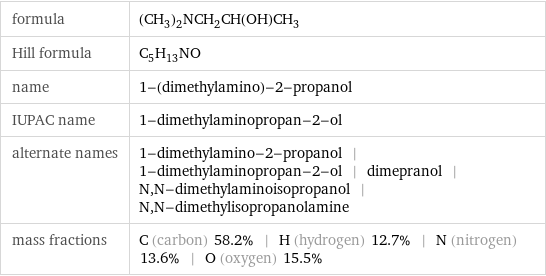
formula | (CH_3)_2NCH_2CH(OH)CH_3 Hill formula | C_5H_13NO name | 1-(dimethylamino)-2-propanol IUPAC name | 1-dimethylaminopropan-2-ol alternate names | 1-dimethylamino-2-propanol | 1-dimethylaminopropan-2-ol | dimepranol | N, N-dimethylaminoisopropanol | N, N-dimethylisopropanolamine mass fractions | C (carbon) 58.2% | H (hydrogen) 12.7% | N (nitrogen) 13.6% | O (oxygen) 15.5%
Lewis structure
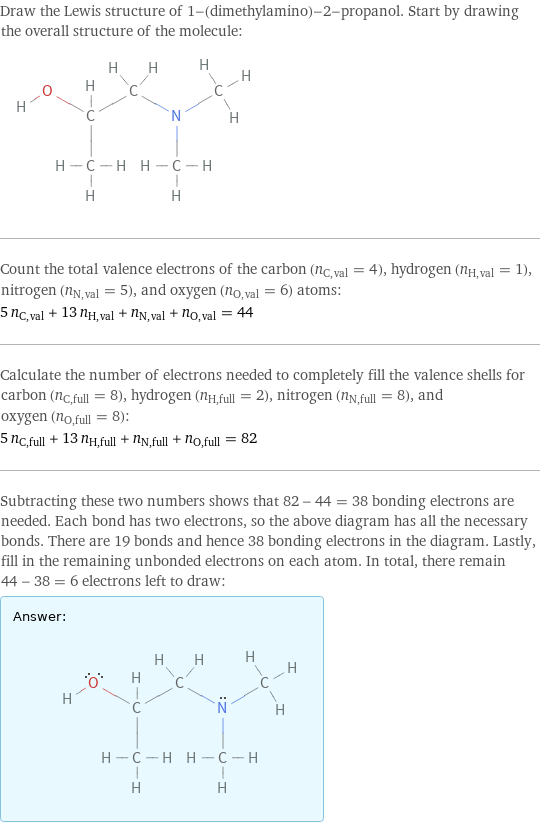
Draw the Lewis structure of 1-(dimethylamino)-2-propanol. Start by drawing the overall structure of the molecule: Count the total valence electrons of the carbon (n_C, val = 4), hydrogen (n_H, val = 1), nitrogen (n_N, val = 5), and oxygen (n_O, val = 6) atoms: 5 n_C, val + 13 n_H, val + n_N, val + n_O, val = 44 Calculate the number of electrons needed to completely fill the valence shells for carbon (n_C, full = 8), hydrogen (n_H, full = 2), nitrogen (n_N, full = 8), and oxygen (n_O, full = 8): 5 n_C, full + 13 n_H, full + n_N, full + n_O, full = 82 Subtracting these two numbers shows that 82 - 44 = 38 bonding electrons are needed. Each bond has two electrons, so the above diagram has all the necessary bonds. There are 19 bonds and hence 38 bonding electrons in the diagram. Lastly, fill in the remaining unbonded electrons on each atom. In total, there remain 44 - 38 = 6 electrons left to draw: Answer: | |
3D structure
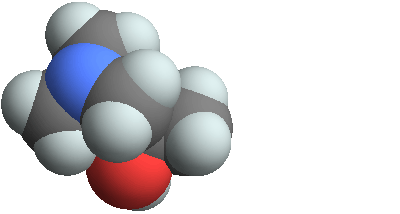
3D structure
Basic properties
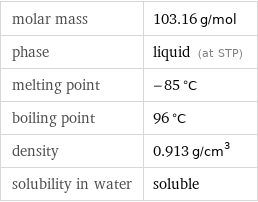
molar mass | 103.16 g/mol phase | liquid (at STP) melting point | -85 °C boiling point | 96 °C density | 0.913 g/cm^3 solubility in water | soluble
Units

Liquid properties (at STP)
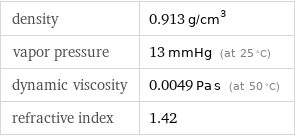
density | 0.913 g/cm^3 vapor pressure | 13 mmHg (at 25 °C) dynamic viscosity | 0.0049 Pa s (at 50 °C) refractive index | 1.42
Units

Chemical identifiers
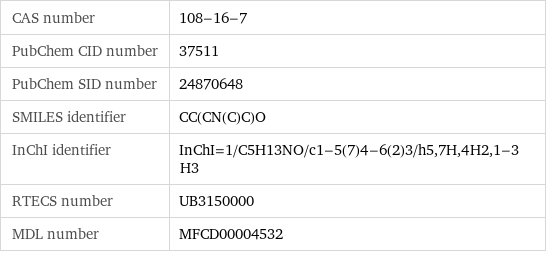
CAS number | 108-16-7 PubChem CID number | 37511 PubChem SID number | 24870648 SMILES identifier | CC(CN(C)C)O InChI identifier | InChI=1/C5H13NO/c1-5(7)4-6(2)3/h5, 7H, 4H2, 1-3H3 RTECS number | UB3150000 MDL number | MFCD00004532
NFPA label

NFPA label

NFPA health rating | 2 NFPA fire rating | 3 NFPA reactivity rating | 0
Safety properties
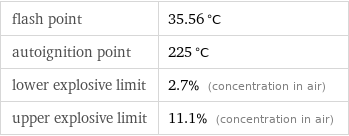
flash point | 35.56 °C autoignition point | 225 °C lower explosive limit | 2.7% (concentration in air) upper explosive limit | 11.1% (concentration in air)

DOT hazard class | 8 DOT numbers | 2920
Toxicity properties

RTECS classes | drug | primary irritant